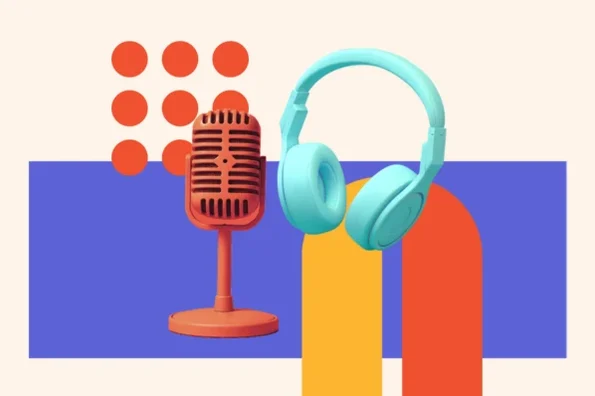The advent of artificial intelligence (AI) has revolutionized countless industries, and audio production is no exception. Among the most significant developments is the rise of AI voiceovers, which are rapidly transforming the way content is created and consumed. This article delves into the world of AI voiceovers, exploring their capabilities, benefits, challenges, and the future implications for the audio production industry.
Understanding AI Voiceovers
AI voiceovers, also known as synthetic speech or text-to-speech (TTS), are generated by sophisticated algorithms that can convert written text into natural-sounding spoken language. These systems leverage vast amounts of data to learn and mimic human speech patterns, accents, and intonations.
How AI Voiceovers Work
The process of creating an AI voiceover typically involves the following steps:
- Text Input: The desired text is fed into the AI system.
- Text Analysis: The system analyzes the text for meaning, syntax, and punctuation.
- Speech Synthesis: The AI generates audio waveforms corresponding to the analyzed text.
- Voice Customization: The generated audio is often processed to match specific voice characteristics, such as pitch, tone, and accent.
- Output: The final AI voiceover is produced in a desired audio format.
Benefits of AI Voiceovers
AI voiceovers offer a multitude of advantages over traditional voiceover methods:
Cost-Effectiveness
- Reduced Production Costs: Eliminates the need for human voice actors, studios, and equipment.
- Scalability: Quickly produce large volumes of audio content at a fraction of the traditional cost.
Speed and Efficiency
- Rapid Turnaround: AI voiceovers can be generated instantly, accelerating content production.
- Automation: Streamline workflows and reduce manual labor.
Consistency and Quality
- Uniform Output: Ensures consistent voice quality across different projects.
- Customization: Fine-tune voice characteristics to match specific brand identities.
Accessibility
- Language Support: Create voiceovers in multiple languages, expanding audience reach.
- Voice Customization: Adapt voiceovers for individuals with speech impairments or disabilities.
Versatility
- 24/7 Availability: AI voiceovers can be generated anytime, anywhere.
- Diverse Applications: Suitable for various content formats, including videos, audiobooks, e-learning, and more.
Challenges and Limitations
While AI voiceovers offer significant benefits, they also present certain challenges:
Naturalness
- Achieving Human-Like Quality: While advancements have been made, replicating the nuances of human speech remains a challenge.
- Emotional Expression: Conveying complex emotions and subtleties can be difficult for AI systems.
Intellectual Property
- Voice Cloning: Concerns about unauthorized use of voice data and potential copyright infringements.
- Deepfakes: Misuse of AI voiceovers for malicious purposes, such as creating fake audio content.
Data Privacy
- Sensitive Information: Protecting user data and preventing unauthorized access is crucial.
Types of AI Voiceovers
AI voiceovers can be categorized based on different criteria:
By Voice Style
- Neutral Voice: Ideal for informative content, such as narration or instructional videos.
- Expressive Voice: Suitable for storytelling, character voices, and emotional content.
- Conversational Voice: Mimics natural human conversation, often used for virtual assistants and chatbots.
By Language
- English Voiceovers: Dominate the market due to the language’s global prevalence.
- Multilingual Voiceovers: Catering to diverse audiences with support for various languages.
By Application
- E-learning Voiceovers: Enhance online learning experiences with engaging audio content.
- Video Game Voiceovers: Create immersive gaming environments with realistic character voices.
- Audiobook Voiceovers: Bring written stories to life through high-quality audio narration.
AI Voiceover Platforms and Tools
Several AI voiceover platforms and tools have emerged to meet the growing demand:
- Cloud-Based Platforms: Offer user-friendly interfaces and a wide range of voice options.
- Text-to-Speech APIs: Integrate AI voiceover capabilities into custom applications.
- Desktop Software: Provide standalone solutions for offline voiceover generation.
The Future of AI Voiceovers
AI voiceovers are poised to become even more sophisticated and widely adopted in the coming years. Key trends to watch include:
- Hyper realistic Voiceovers: Achieving near-perfect human-like quality through advancements in AI.
- Real-Time Voice Generation: Enabling dynamic and interactive voiceover experiences.
- Multimodal AI: Combining voice, text, and visual elements for enhanced storytelling.
- Ethical Considerations: Developing guidelines for responsible AI voiceover development and use.
Conclusion
AI voiceovers have undeniably transformed the audio production landscape. By offering cost-effectiveness, speed, consistency, and versatility, they have become a valuable tool for content creators across various industries. While challenges remain, ongoing research and development are pushing the boundaries of AI voiceover technology, promising even more exciting possibilities in the future. As AI continues to evolve, it is essential to address ethical considerations and ensure responsible use of this powerful technology.



